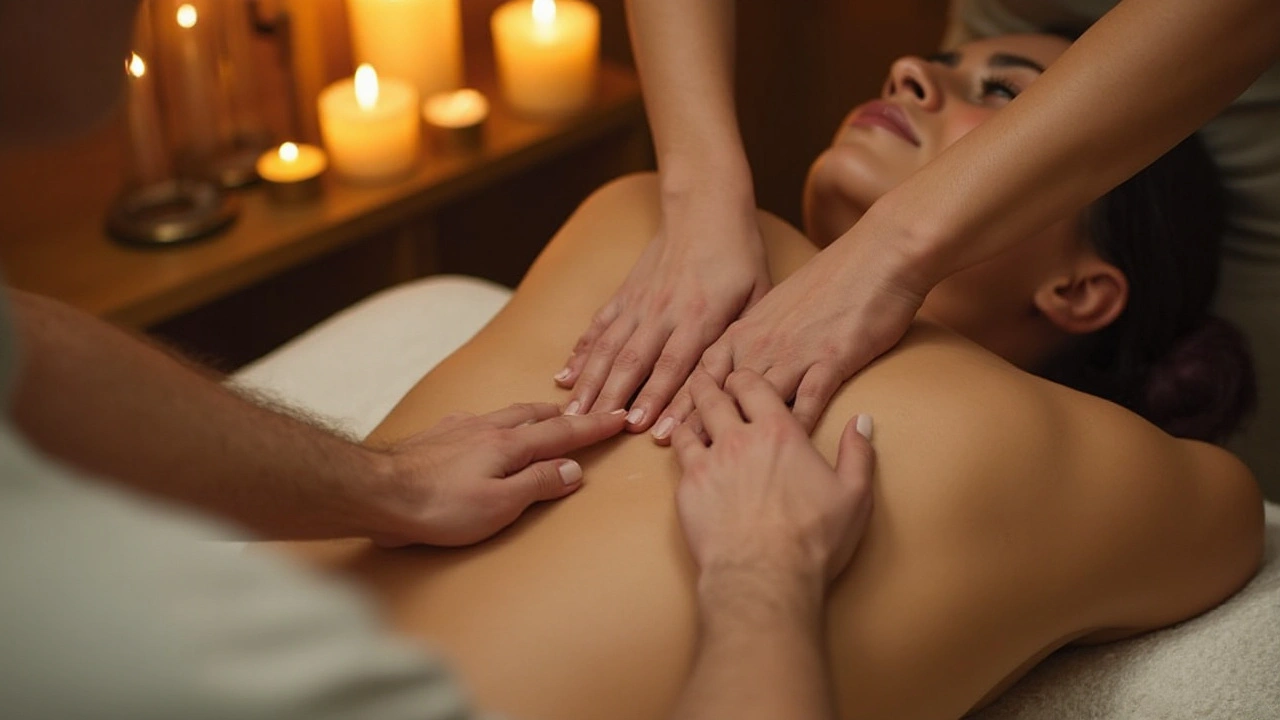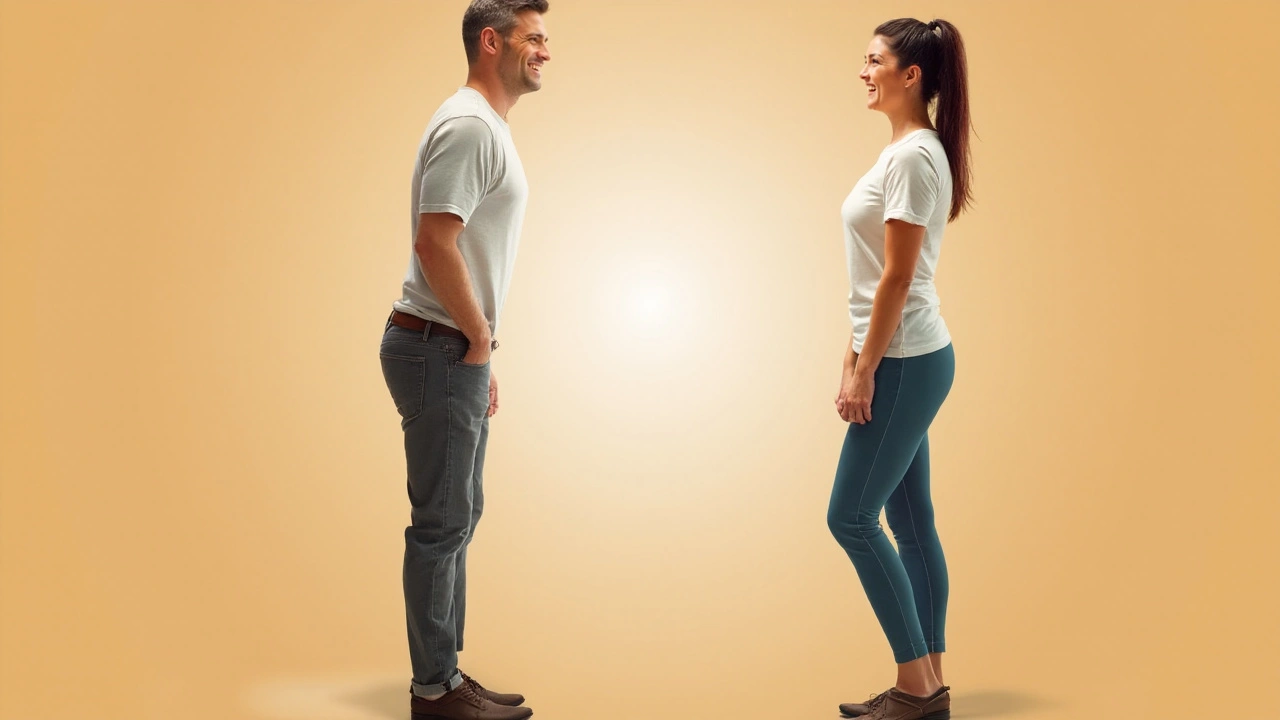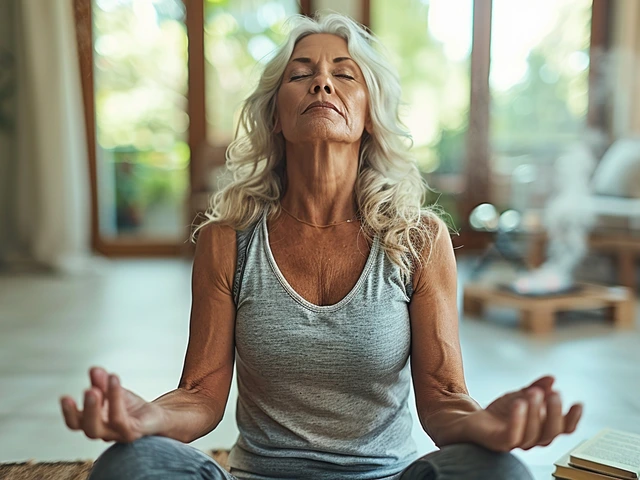Rolfing: Discovering the Holistic Body Healing Technique

Rolfing, an often misunderstood yet highly effective bodywork technique, goes beyond conventional methods of addressing physical discomfort. Developed by Dr. Ida Rolf in the 20th century, Rolfing seeks to integrate the body's structure through manual manipulation of the connective tissues, known as fascia. This holistic practice aims to ease pain, improve posture, and restore balance.
Unlike a typical massage, Rolfing involves a systematic approach to re-align the body's overall structure. Practitioners use their hands, knuckles, and elbows to apply pressure to fascia, helping to release tension and encourage the body to reorganize itself. This method helps individuals achieve a sense of physical harmony and often results in a noticeable improvement in movement and stability.
People who undergo Rolfing explore not only physical benefits but also improvements in mental and emotional well-being. Because the practice is focused on achieving balance within the body, many find it helps alleviate chronic stress and tension. Reviewing the journey through Rolfing, you'll gain insights into its many layers and how it redefines the path to holistic wellness.
- What is Rolfing?
- Principles Behind Rolfing
- Benefits of Rolfing
- What to Expect in a Rolfing Session
- Is Rolfing Right for You?
What is Rolfing?
Rolfing, formally known as Rolfing Structural Integration, is a unique approach to holistic healing that focuses on the body's fascia, or connective tissue. Founded by Dr. Ida Rolf in the mid-20th century, this technique aims to re-align and balance the body's structure to promote better health and comfort. Unlike typical massage therapies that often focus on relaxation and temporary relief, Rolfing works at a deeper level to address chronic pain, posture issues, and overall body mechanics.
Dr. Ida Rolf was a biochemist who initially developed this method while researching how the body's structure could influence overall well-being. She believed that misalignments in the body's connective tissues could lead to various physical ailments. By manipulating the fascia, Rolfers—trained practitioners of this technique—help clients achieve a more aligned and balanced body, contributing to improved posture and reduced chronic pain.
The practice is often described as being more intense than regular massage. This is because it involves deep, sometimes firm pressure to manipulate and stretch the fascia. Rolfing sessions typically follow a 10-series program designed to systematically address different areas of the body, each session building on the previous one to create a more balanced and aligned physical structure. This structured approach helps in making long-term postural changes.
Many people are drawn to Rolfing for its potential to provide relief from chronic conditions such as back pain, neck pain, and even repetitive strain injuries often seen in office workers and athletes alike. Additionally, those who have undergone Rolfing often report not only physical benefits but also improvements in mental clarity and emotional well-being. The holistic approach addresses the body as a whole system, rather than treating just the symptoms.
“We work with the fascial system of connective tissues to not only alleviate pain but also bring the entire body into alignment. It's about fostering a dialogue between the mind and body,” says Jamie McHughes, a certified Rolfer with over 15 years of experience.
The efficacy of Rolfing has been supported by various studies. For example, a 2015 study in the Journal of Bodywork and Movement Therapies found that participants who underwent Rolfing reported significant reductions in pain and improvements in quality of life metrics. These scientific insights add credibility to a practice that has already delivered remarkable results for many people around the world.
For those considering Rolfing, it's essential to consult with a certified practitioner who can tailor the sessions to individual needs. Because each person's body structure is unique, a skilled Rolfer will be able to identify specific imbalances and work towards correcting them. This empowers individuals not just to feel better temporarily but also to understand their bodies better and take an active role in their well-being.
Principles Behind Rolfing
The foundation of Rolfing rests on the idea that the body's structure and its alignment with gravity significantly influence overall health and well-being. Unlike conventional therapies that often target symptoms, Rolfing dives deeper, aiming to address the root causes of discomfort and imbalance. This approach is grounded in a few key principles that set it apart from other body therapies.
First and foremost is the concept of fascia, the connective tissue that encases muscles, bones, and organs. Over time, fascia can become tight and misaligned due to injury, poor posture, or chronic stress. Rolfing practitioners believe that by manually manipulating the fascia, they can help the body find better alignment and promote more efficient movement patterns.
Another essential principle is the significance of the gravitational field. Dr. Ida Rolf posited that gravity is a crucial organizing force that has profound effects on our bodies. When the body is misaligned, it must exert extra energy to fight against gravity, leading to strain and discomfort. Through Rolfing, the goal is to bring the body into a more harmonious relationship with gravity, enabling it to function with less effort and more ease.
One of the unique aspects of Rolfing is its holistic view of the body. It considers how different parts of the body interact with each other. When you improve the alignment of one part, ripple effects are seen throughout the entire system. This perspective helps in addressing long-standing issues that may stem from imbalances not immediately apparent.
Dr. Rolf often emphasized the body's innate ability to heal itself given the right circumstances. Rolfing aims to create those optimal conditions. By releasing tense fascia, practitioners believe they facilitate the body's natural alignment processes. The technique also encourages greater body awareness, allowing individuals to recognize and correct harmful patterns of movement and posture.
"Rolfing is not just about fixing a part of the body; it's about restoring the body's overall balance and function," notes Anne Tierney, a seasoned Rolfer with over 20 years of experience.This systemic approach is another factor that distinguishes Rolfing from typical massages or chiropractic work. Rather than providing temporary relief, Rolfing aims to produce lasting changes by addressing the underlying causes of tension and misalignment.
Another principle involves the Rolfing Ten Series, a structured approach consisting of ten sessions, each with a specific focus. This series is designed to systematically address the entire body, gradually leading to a more functional and aligned structure. Each session builds on the previous one, creating cumulative benefits over time. The first three sessions, for example, focus on loosening the superficial layers of fascia, while the following ones delve deeper into the body's core structures.

Benefits of Rolfing
When it comes to holistic healing, Rolfing boasts a range of benefits that can significantly improve one’s quality of life. The primary goal is realigning the body so that it moves more efficiently and with less discomfort. Let's dive into the specific ways Rolfing can make a difference in your holistic wellness journey.
First and foremost, Rolfing is renowned for its efficacy in managing and alleviating chronic pain. Whether you suffer from back pain, migraines, or joint pain, Rolfing addresses the root causes by improving the body's structural alignment. This reduces tension and allows for smoother, pain-free movement. Many individuals report long-lasting relief that conventional treatments have failed to provide.
Another significant benefit is the enhancement of posture. Poor posture is a common issue that can lead to various health problems, including neck pain and breathing difficulties. By working on the fascia, Rolfing practitioners help realign the body, making it easier for you to maintain an upright and balanced posture. This not only improves physical health but can boost self-confidence and overall energy levels as well.
Rolfing also offers emotional and mental benefits. As physical tensions in the body are released, many find a concurrent release of emotional stress. The mind-body connection fostered during sessions encourages relaxation and a sense of mental clarity. A study conducted by the Journal of Bodywork and Movement Therapies found that participants experienced reduced anxiety and enhanced emotional well-being following a series of Rolfing sessions.
Perhaps most interestingly, Rolfing can improve athletic performance. By optimizing the body's structural alignment, athletes often find they can move more efficiently and with greater power. This helps reduce the risk of injuries and enhances overall performance. Professional athletes like marathon runners and tennis players have credited Rolfing with extending their careers.
“Rolfing has been a game-changer for me. It's transformed the way I move and recover,” shares Tom Brady, professional football player.
In addition to these benefits, Rolfing can enhance flexibility. As the fascia becomes more pliable, joints and muscles can move more freely. This reduces stiffness and allows for easier, more graceful movements. This benefit is especially noticeable in older adults who may struggle with flexibility due to age-related changes in their bodies.
Furthermore, Rolfing plays a pivotal role in boosting the body's energy levels. By freeing up the constraints in the connective tissues, the body expends less energy in movement, leaving more reserves for other activities. Enhanced energy often translates to improved productivity and a more vibrant life.
Let's not overlook the benefits of better circulation and breathing. As the body achieves better alignment, blood flow improves and the chest cavity can expand more fully, promoting deeper, more effective breathing. This not only contributes to optimal oxygen levels but also supports overall cardiovascular health.
Rolfing provides a holistic approach that goes beyond addressing immediate symptoms. With its focus on realigning and balancing the body's structure, it offers lasting benefits that touch various aspects of one’s physical, mental, and emotional well-being. From chronic pain relief and improved posture to heightened athletic performance and emotional tranquility, Rolfing represents a comprehensive path to a healthier, more balanced life.
What to Expect in a Rolfing Session
When you schedule your first Rolfing session, you might find yourself both curious and slightly apprehensive. Understanding what unfolds during a session can help ease any anxiety you might experience. Typically, a session begins with a consultation where the Rolfer will ask about your history, areas of discomfort, and specific goals. This initial discussion helps tailor the treatment to your unique needs.
Rolfing sessions usually take place on a specialized table, similar to a massage table but often more firm. You might be asked to wear minimal clothing, like a pair of shorts or a sports bra, to help the practitioner better access various parts of your body. The Rolfer will then assess your posture and how you move. They may ask you to walk, sit, or stand in different positions to identify any misalignments or areas of tension.
The hands-on portion of the session often starts with gentle pressure to warm up the connective tissues. As the session progresses, the pressure may increase, but it should always remain within your comfort zone. You may feel some discomfort, often described as a 'good pain,' signifying that the area is being effectively worked on. Each movement and pressure application aims to release tension, reorganize the connective tissues, and restore balance.
Most Rolfing series last for ten sessions, often referred to as 'the Ten Series.' Each session focuses on different areas of the body. For instance, the initial sessions might tackle superficial layers like the skin and muscles, while later sessions delve deeper into the body's core. Rolfers aim to create lasting change, not just temporary relief. By the end of the series, clients often report significant improvements in both pain and posture.
“Rolfing isn’t just about alleviating pain but about enhancing the body's natural alignment,” explains Dr. Thomas Myers, a renowned expert in bodywork. “The goal is a more efficient and graceful posture.”
During the session, be prepared to provide feedback. A good Rolfer will frequently check in with you to ensure that you are comfortable and that the treatment is effective. Communication is key, as it helps the practitioner adjust their techniques according to your needs. It's also common to feel various sensations such as warmth, tingling, or even an emotional release as the treatment progresses.
After the session, you may feel a bit sore, similar to how you might feel after a workout. Drinking plenty of water and resting can help alleviate these effects. It's also beneficial to engage in light activities that help integrate the physical changes, such as gentle stretching or walking. Many people find they feel more balanced and free in their movements after a Rolfing session, noticing improvements in aspects they didn't even realize needed adjustment.

Is Rolfing Right for You?
Deciding whether Rolfing is the right approach to address your physical woes requires understanding what it offers and whom it benefits the most. Individuals dealing with chronic pain, posture issues, or those seeking to improve overall body alignment may find Rolfing particularly advantageous. Since Rolfing focuses on the connective tissues, it can be effective for conditions not easily addressed by conventional therapies.
People often turn to Rolfing after traditional methods have failed to provide lasting relief. This practice aims to bring the body into alignment, which can be transformative for those who spend long periods sitting at desks or are required to maintain certain postures for work. Athletes, for example, frequently report enhanced performance and quicker recovery after integrating Rolfing into their routines. Notably, some individuals experience psychological benefits as well, reporting reduced stress levels and an overall sense of well-being.
If you're wondering whether this technique is suitable for you, consider scheduling an initial consultation. A certified Rolfer will assess your body's structure, speak with you about your goals, and provide an overview of what to expect from the sessions. It's a personalized approach, meaning each plan is tailored to your specific needs and conditions.
One well-known advantage of Rolfing is its focus on lasting results rather than temporary relief. By addressing the root causes of discomfort and misalignment, this technique promotes sustained well-being. Many clients note significant improvements in their posture, which subsequently alleviates stress on joints and muscles, reducing the likelihood of recurring issues.
According to a study published in the Journal of Bodywork and Movement Therapies, 88% of participants reported improvements in their posture and overall satisfaction with their body after a course of Rolfing sessions.
Rolfing is not limited to any specific age group or demographic. It can be beneficial for children, adults, and the elderly. However, it is essential to consult a healthcare provider before beginning any new treatment, including Rolfing, especially if you have existing medical conditions. Although Rolfing is generally considered safe, certain health issues such as acute inflammation, severe osteoporosis, or recent surgery may necessitate caution or alternative measures.
So, how do you truly know if Rolfing is right for you? The best approach is to gather information, ask questions, and try a session. Many people experience significant positive changes, while others may find different therapies more suitable. The key lies in recognizing your body's unique needs and being open to exploring holistic paths to wellness. It might just be the missing piece in your journey toward optimal health.





